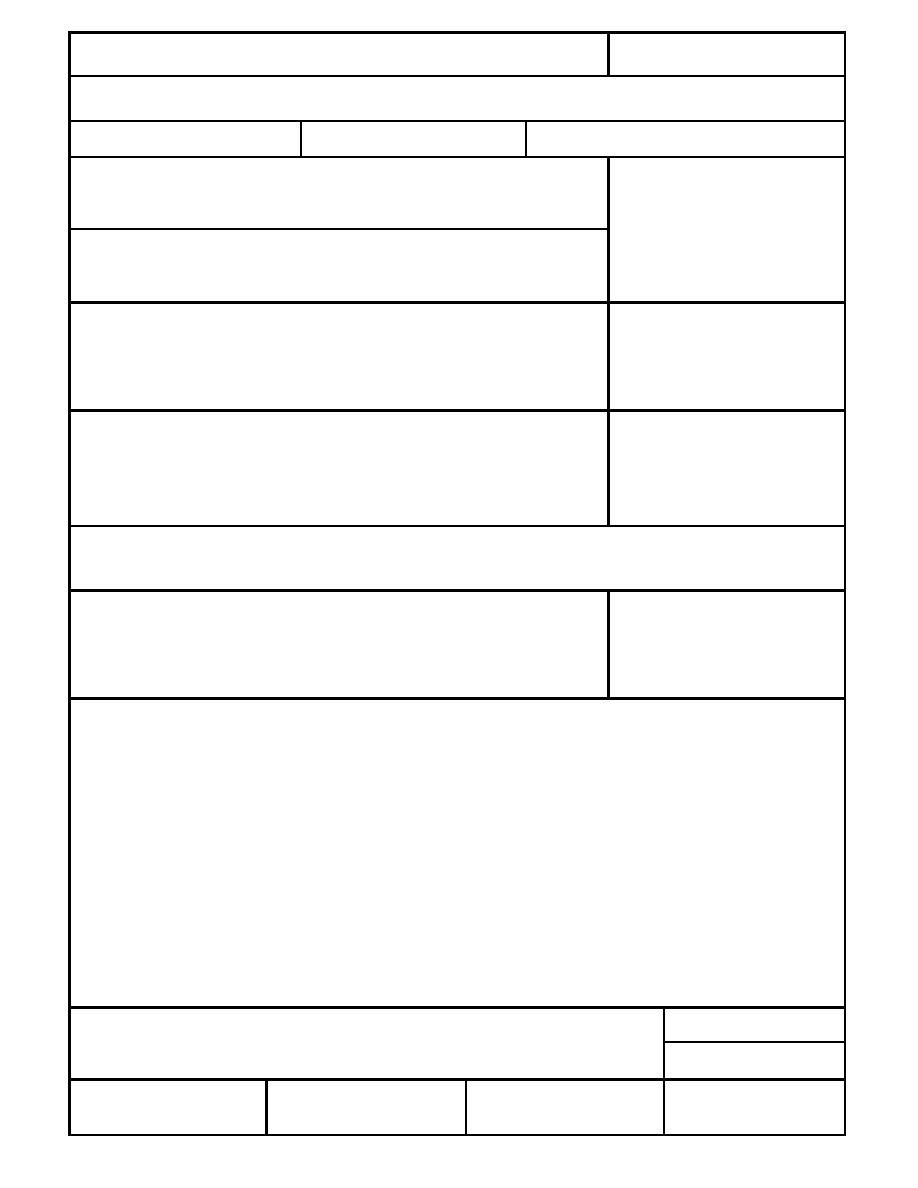
Form Approved
REPORT DOCUMENTATION PAGE
OMB No. 0704-0188
Public reporting burden for this collection of information is estimated to average 1 hour per response, including the time for reviewing instructions, searching existing data sources, gathering and
maintaining the data needed, and completing and reviewing the collection of information. Send comments regarding this burden estimate or any other aspect of this collection of information,
including suggestion for reducing this burden, to Washington Headquarters Services, Directorate for Information Operations and Reports, 1215 Jefferson Davis Highway, Suite 1204, Arlington,
VA 22202-4302, and to the Office of Management and Budget, Paperwork Reduction Project (0704-0188), Washington, DC 20503.
1. AGENCY USE ONLY (Leave blank)
2. REPORT DATE
3. REPORT TYPE AND DATES COVERED
August 1996
4. TITLE AND SUBTITLE
5. FUNDING NUMBERS
Structural Mechanics Solutions for Butt Joint Seals in Cold Climates
PE: 6.27.84A
PR: 4A762784AT42
TA: BS
6. AUTHORS
WU: 020
Stephen A. Ketcham
7. PERFORMING ORGANIZATION NAME(S) AND ADDRESS(ES)
8. PERFORMING ORGANIZATION
REPORT NUMBER
U.S. Army Cold Regions Research and Engineering Laboratory
72 Lyme Road
CRREL Report 96-10
Hanover, New Hampshire 03755-1290
9. SPONSORING/MONITORING AGENCY NAME(S) AND ADDRESS(ES)
10. SPONSORING/MONITORING
AGENCY REPORT NUMBER
Office of the Chief of Engineers
Washington, D.C. 20314-1000
11. SUPPLEMENTARY NOTES
For conversion of SI units to non-SI units of measurement consult ASTM Standard E380-93, Standard Practice for Use of the
International System of Units, published by the American Society for Testing and Materials, 1916 Race St., Philadelphia, Pa.
19103.
12a. DISTRIBUTION/AVAILABILITY STATEMENT
12b. DISTRIBUTION CODE
Approved for public release; distribution is unlimited.
Available from NTIS, Springfield, Virginia 22161
13. ABSTRACT (Maximum 200 words)
An effective, formed-in-place joint seal will respond with elastic or viscoelastic behavior over a reasonable
design life to any large movement of the joint without adhesive or cohesive failure. For a given joint move-
ment, seals with lower stiffness are most able to deform without cohesive or adhesive failure of the seal or of
the structure to which it is bonded. It is in recognition of this desirable response feature that lower-modulus,
rubber-based elastomeric materials have been formulated and promoted as joint sealants. For a seal formed
from an elastomeric sealant, it should generally be expected that the modulus of elasticity will depend upon
temperature and loading rate, such that the modulus increases (sometimes dramatically) with a reduction in
temperature and an increase in loading rate, and it should be expected that the seal stiffness will depend upon
the material modulus and the shape of the seal. Measurements from testing techniques that are routinely used
to evaluate the temperature and rate-dependent mechanical properties of rubber-like materials, together with
simple structural mechanics solutions for the load vs. deflection behavior of rubber in the configuration of
rectangular-shaped joint seals, allow these dependencies to be modeled, and form the basis of a practical
analysis technique that could be used by civil and mechanical engineers for sealant selection and seal design.
14. SUBJECT TERMS
15. NUMBER OF PAGES
20
Elastomeric butt joint seal
Extension and compression loading
16. PRICE CODE
Shear loading
17. SECURITY CLASSIFICATION
18. SECURITY CLASSIFICATION
19. SECURITY CLASSIFICATION
20. LIMITATION OF ABSTRACT
OF REPORT
OF THIS PAGE
OF ABSTRACT
UNCLASSIFIED
UNCLASSIFIED
UNCLASSIFIED
UL
Standard Form 298 (Rev. 2-89)
NSN 7540-01-280-5500
Prescribed by ANSI Std. Z39-18
298-102



 Previous Page
Previous Page
